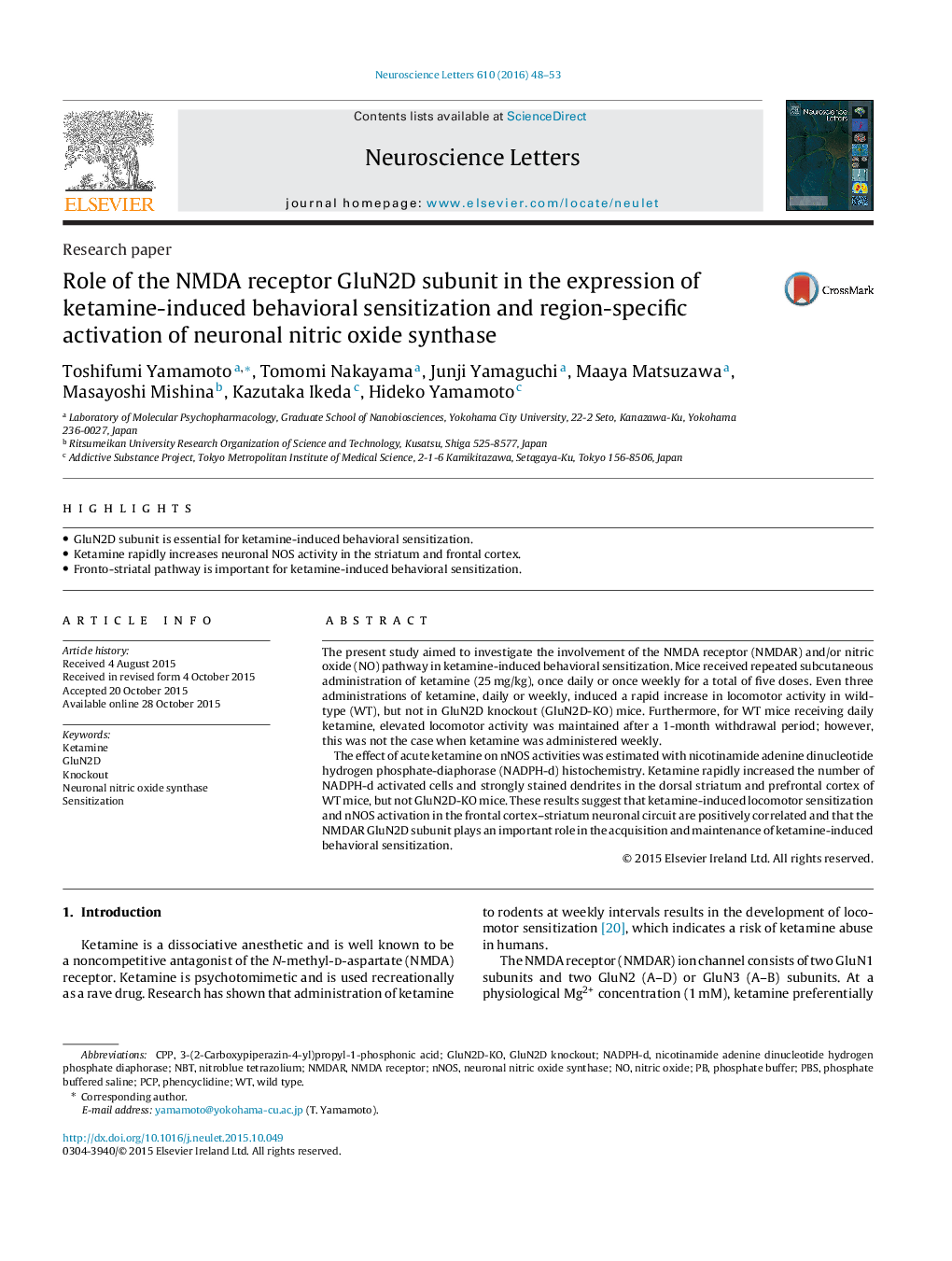| Article ID | Journal | Published Year | Pages | File Type |
|---|---|---|---|---|
| 6280199 | Neuroscience Letters | 2016 | 6 Pages |
â¢GluN2D subunit is essential for ketamine-induced behavioral sensitization.â¢Ketamine rapidly increases neuronal NOS activity in the striatum and frontal cortex.â¢Fronto-striatal pathway is important for ketamine-induced behavioral sensitization.
The present study aimed to investigate the involvement of the NMDA receptor (NMDAR) and/or nitric oxide (NO) pathway in ketamine-induced behavioral sensitization. Mice received repeated subcutaneous administration of ketamine (25Â mg/kg), once daily or once weekly for a total of five doses. Even three administrations of ketamine, daily or weekly, induced a rapid increase in locomotor activity in wild-type (WT), but not in GluN2D knockout (GluN2D-KO) mice. Furthermore, for WT mice receiving daily ketamine, elevated locomotor activity was maintained after a 1-month withdrawal period; however, this was not the case when ketamine was administered weekly.The effect of acute ketamine on nNOS activities was estimated with nicotinamide adenine dinucleotide hydrogen phosphate-diaphorase (NADPH-d) histochemistry. Ketamine rapidly increased the number of NADPH-d activated cells and strongly stained dendrites in the dorsal striatum and prefrontal cortex of WT mice, but not GluN2D-KO mice. These results suggest that ketamine-induced locomotor sensitization and nNOS activation in the frontal cortex-striatum neuronal circuit are positively correlated and that the NMDAR GluN2D subunit plays an important role in the acquisition and maintenance of ketamine-induced behavioral sensitization.
